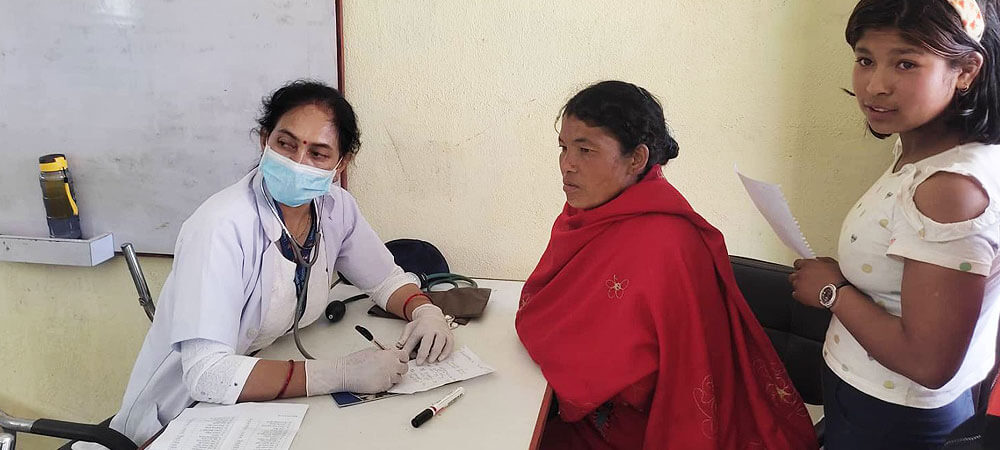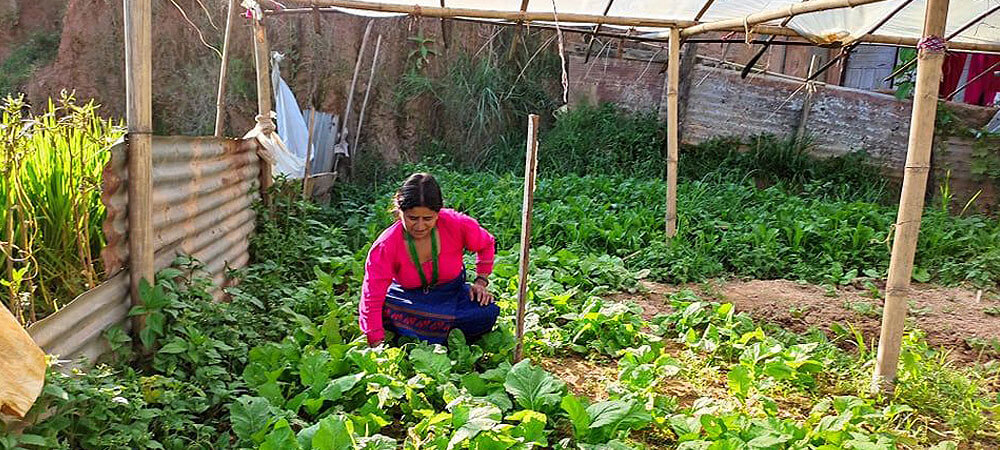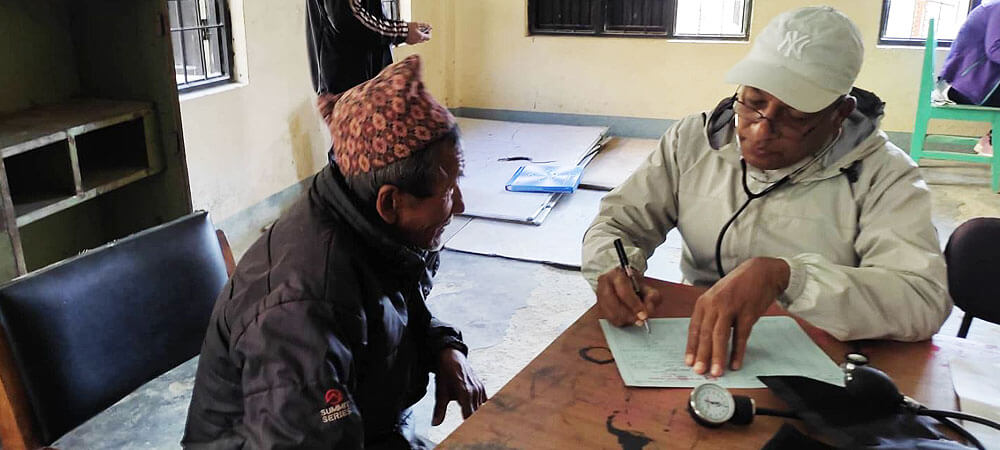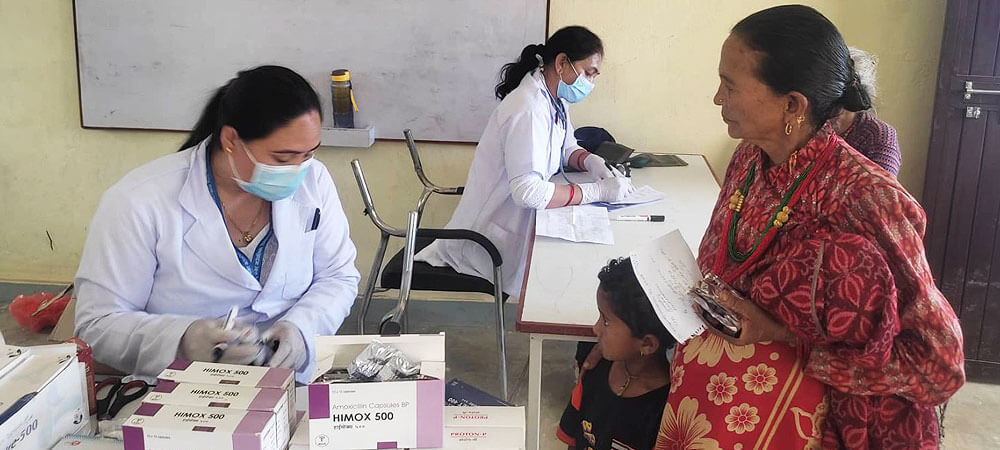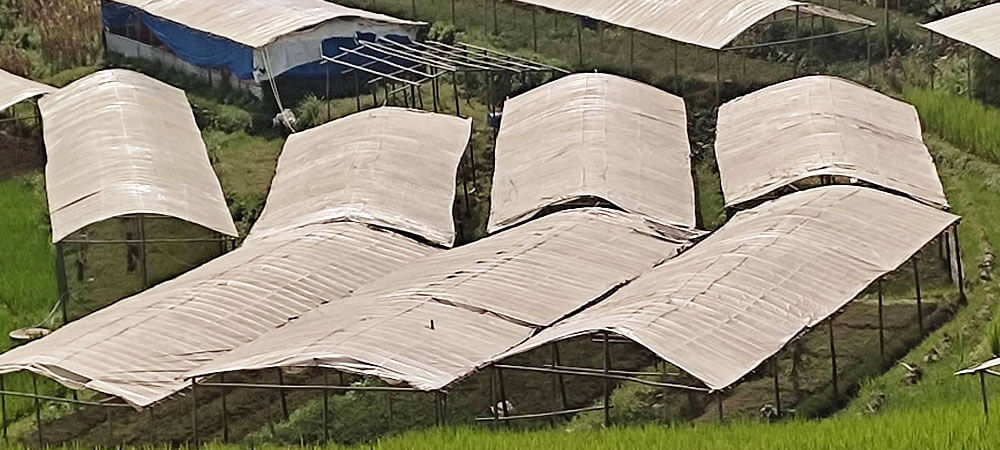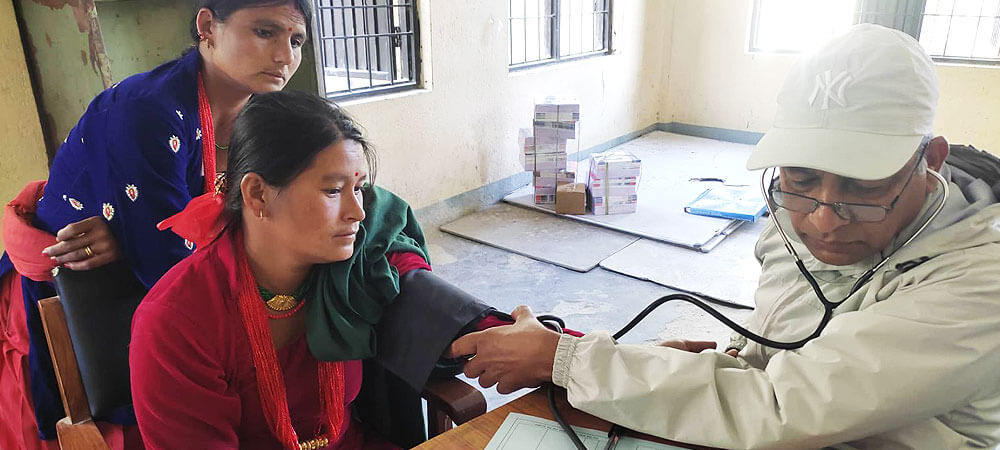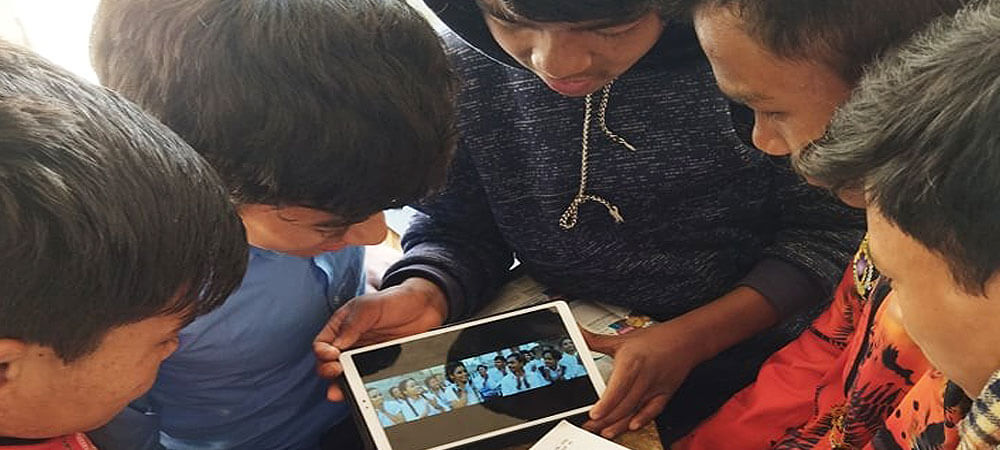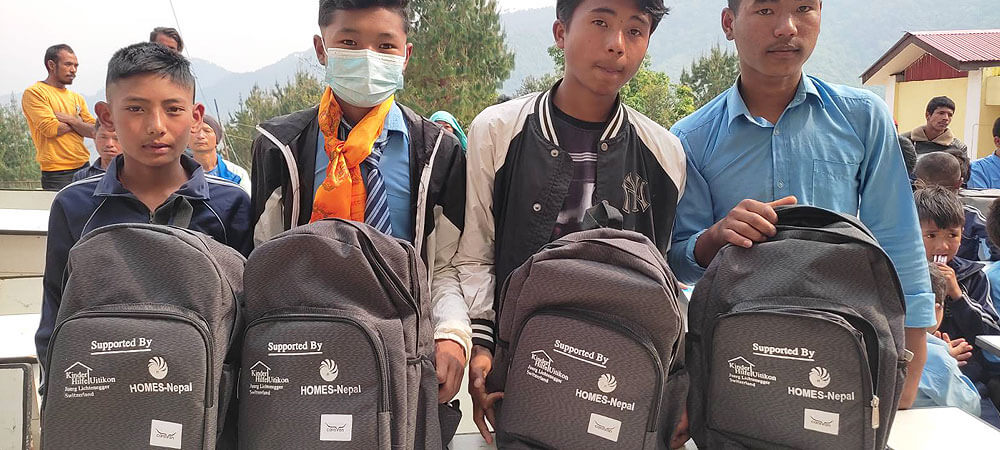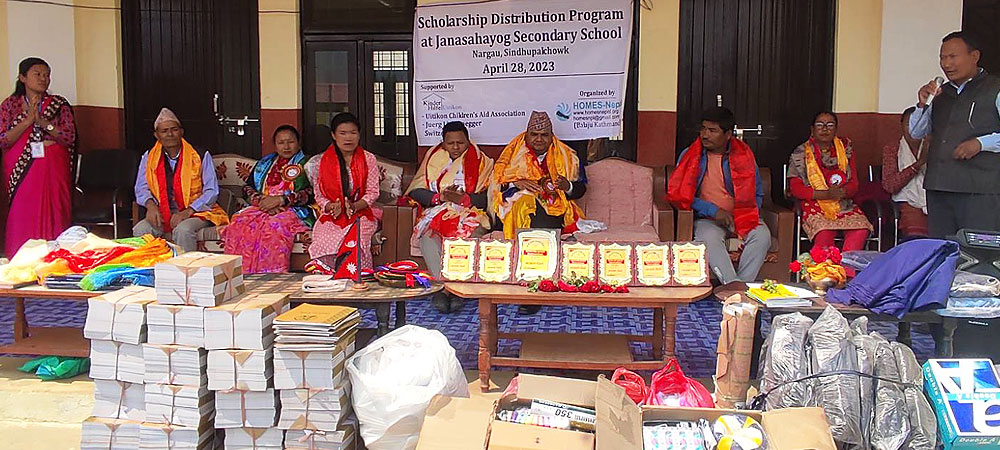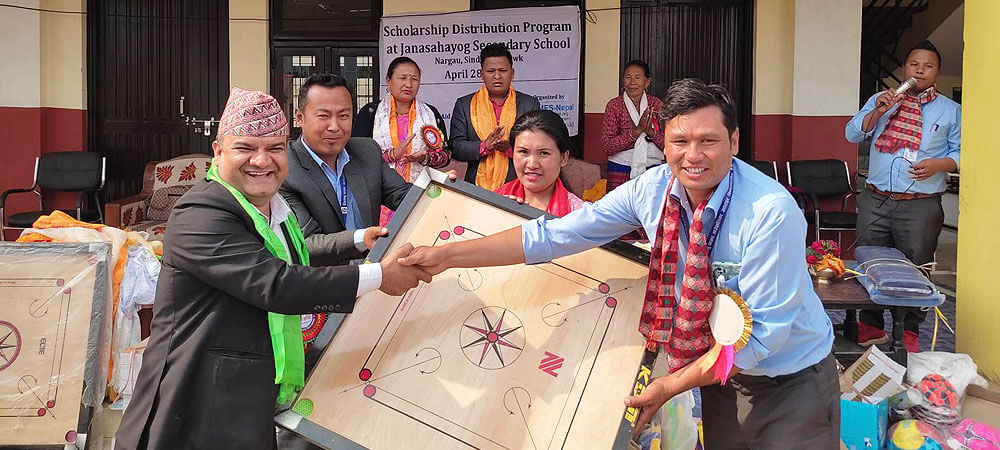TRAINING REPORT 2024
Title
Report on
Teachers' Training
Nargau, Sindhupalchowk
Submitted to:
Juerg Lichtenegger
Switzerland
Lisankhu Pakhar Rural Municipality
Chhahari Nepal
Joint Vision
Universal Television
Submitted by:
HOMES Nepal
Balaju, Kathmandu
Phone: +977-9851036568
E-mail:
Web: www.homesnepal.org
December, 2024
Project Description
Sindhupalchowk District is a part of Bagmati province and one of the seventy seven districts of Nepal, with an area of 2,542 km2 (981 sq mi). People depend entirely on agriculture for their survival.
The situation in Sindhupalchowk District, particularly in the Lisankhu/Nargau project area, highlights the challenges faced by the local community, especially after the devastating earthquake in 2015 and the subsequent impact of the COVID-19 pandemic. The district's dependence on agriculture, coupled with hilly terrain and low fertility of the land, contributes to the hardships faced by the people.
The earthquake of 2015 had severe consequences in Sindhupalchowk District, causing significant loss of life, injuries, and extensive damage to homes and schools. The aftermath of such a disaster can have long-lasting effects on the community, affecting their living conditions and economic stability. The global pandemic further exacerbated the challenges faced by the residents, impacting the economic conditions of the village. Vulnerable communities, already grappling with post-earthquake recovery, found themselves facing additional hardships due to the pandemic. The poverty prevalent in the area is a major factor contributing to the challenges faced by the community. Insufficient resources hinder proper reconstruction of damaged homes, leaving some residents in temporary or transitional shelters.
The majority of the population in the Lisankhu/Nargau project area belongs to the Tamang ethnic group. Understanding the cultural context and specific needs of this ethnic community is crucial for implementing effective support and development initiatives.
The impact of poverty on children's nutrition and educational opportunities is evident. Malnutrition and a low school enrollment rate are serious concerns. The dropout of children from schools, often driven by economic necessity, perpetuates a cycle of limited educational attainment and increased vulnerability.
The intervention of HOMES Nepal along with Juerg and Uitikon through scholarship programs, Medical camp, Library, Computer support, digital learning, Kindergarten support and so on are a worthy effort to address the educational challenges faced by earthquake-affected and economically disadvantaged families.
The challenges faced by the community in Sindhupalchowk district are multifaceted, ranging from natural disasters to economic vulnerabilities. Initiatives like those undertaken by HOMES Nepal are crucial for providing targeted support, particularly in the realm of education, to break the cycle of poverty and contribute to the long-term development of the community.
The school is facing the problem of the knowledge of the teachers in multiple aspects. To improve the educational status of the students, teachers should be perfect to deliver. So, the school is planned to provide teachers' training in holistic approach.
Teacher training refers to the professional education and development that teachers undergo to improve their teaching skills, gain new knowledge, and become more effective educators. It is an essential process to ensure that educators are well-prepared to address the diverse needs of students in different educational settings. The trainings have been completed with receiving the multiple knowledge.
Objectives
The overall objective of the training is to empower the teachers in technology, language, teaching method, health and hygiene and school administration.
1. Training on handling of e-learning methods
Training dates: Oct 5-9
No. of Participants: 13
Activities:
Day 1:
Enhancing Computer Skills
- Basic computer skills like typing, navigating
- File management
- Emails and online communication
Day 2:
Internet Handling
- Trained to use web browser and navigating websites
- Trained how to save frequently visited websites i.e bookmarking
- Given the knowledge about misuse of internet.
- Cyberbullying and Harassment Phishing and Scams
Day 3:
Handling Digital Equipment
- All the teachers are provided with tablets
- Helps them to login midaselibrary platform.
- Helps teachers for writing different answers in the tablet
- Submitting answers in tablets
Group Work
- Make a group each of three teachers’
- Given a tasks to perform in the tablet
- Teacher present their tasks in the tablet
Lesson Learnt
Teachers are able to use digital equipment properly and handle them accordingly in needs.
Day 4-5:
MiDas eLibrary teaching based Method
- Trained all the teachers about the features and importance of midas elibrary.
- Help them to use midas elibabry in the tablets.
- Given them tasks to login midas elibrary in their own tablet.
- Given the idea how to interact with student using midas elibrary
Group Work
- Divide the teachers into different groups.
- Given the question from midas elibrarty to discuss in the group and give the answer.
- Played the topic related quizzes to make training interactive.
- Given the Class activities to the teachers and ask to submit through tablet.
Lesson Learnt
This session helps teachers about the midas elibrary based teaching methods using the tablet.
Conclusion
The five-day training program effectively enhanced the computer and digital skills of the participating teachers, focusing on foundational computer literacy, internet handling, and tablet usage, along with the integration of the MiDas eLibrary teaching methodology. Teachers were provided with hands-on experience in using digital tools and resources to improve their teaching practices.
The use of tablets in the training sessions proved to be a significant step forward in fostering modern teaching methods. Tablets enabled efficient access to MiDas eLibrary, facilitated group collaboration, and enhanced the teachers' ability to engage with digital content and student activities effectively. These skills are crucial for creating an interactive and resource-rich classroom environment.
Furthermore, emidas library has been using more than 3000 thousands schools, it is very productive digital learning and helped teachers and students for their daily classes.
Importance of Tablets
Tablets played a pivotal role in this training, offering a versatile platform for accessing educational resources, conducting interactive group activities, and improving classroom management. They bridged the gap between traditional teaching methods and modern, tech-integrated education, ensuring a seamless and engaging learning experience for students, and recommended tablets from grade 5.
Need for Further Training
While the training program successfully equipped teachers with essential digital skills, it also highlighted the need for ongoing training to:
- Deepen their understanding of advanced digital tools and techniques.
- Keep pace with technological advancements in educational platforms like MiDas eLibrary.
- Address challenges in implementing digital teaching methods, ensuring consistency and confidence in using these tools effectively.
Future training sessions should focus on advanced functionalities, troubleshooting, and incorporating student feedback to refine the teaching approach. With sustained effort, teachers will continue to grow as proficient educators in a tech-driven learning environment.
2. English Language-Teaching Training (15 days)
Training dates: Nov 11-25
No. of Participants: 13
Activities:
Objectives:
- Enhancing grammar understanding (e.g.) Sentence structure, Tense, Article.
- Improving English Vocabulary.
- Strengthening written and spoken communication skills.
- Correcting common grammatical mistakes in Professional or academic writing
Training Context:
- Grammar: Tense, Sentence Structure, punctuation, Parts of speech.
- Writing Skills: Writing Formal emails, report, essay etc.
- Speaking and Listing skills (e.g.) conversational practice, public speaking, listening exercise.
- Practical exercise: Grammar exercise, Quizzes, Group Activities, and Role Playing.
Methodology Applied:
Lecture and Participatory Approach
Breakdown of the Session:
- This breakdown ensured that each session has a focus and allows for progression from basic to more advanced concepts.
- It was adjusted the days and Topics based on the participants' skills levels and the amount of time we wanted to allocate to each area.
Day (1-4): Introduction of the English Language and Basic Grammar:
Day 1: Overview of the English language, its structure and importance in communication.
Day 2: Parts of speech (Nouns, Pronouns, adjective and Verbs)
Day 3: Sentence structure (subject, parts of sentence and basic sentence formation)
Day 4: Tense (present, past and future - introduction and basic rules)
Day (5-8): Sentence Construction:
Day 5: Article (a, an, the) and determiners (some, any, many etc.)
Day 6: Preposition and their usages (in, on at between etc.)
Day 7: Advanced sentence structure (compound, complex sentences and punctuation.)
Day 8: Verb forms and auxiliary verbs (can, will, may, shall, should etc.)
Day (9-12): Advanced Grammar and Writing Skills:
Day 9: Active vs Passive voice and when to use them.
Day 10: Direct and Indirect Speech (Reported Speech.)
Day 11: Conditional Sentences. (Zero, First, Second and Third Conditionals.
Day 12: Writing Skills - paragraphs, Coherence and Cohesion.
Day (13-15): Review, Practice and Final assessment:
Day 13: Revision of key Grammar topics covered.
Day 14: Practice exercises (reading comprehension, grammar quizzes, writing.)
Day 15: Final assessment - Grammar test and writing exercise and speaking in Public. @ Provided Feedback.
Outputs:
- Improved communication skills.
- Better Reading Comprehension.
- Increased Confidence.
- Academic Success.
- Improved assuming of Language.
Conclusion:
In conclusion, the training program aimed at enhancing language and grammar understanding has proven to be highly beneficial for participants. The program successfully addressed the key challenges related to grammar proficiency including sentence structure, pronunciation and the correct use of TENSE, which were identified as areas needing improvement at the start by focusing on the fundamental grammar rules and offering practical application, the training has not only improved participants' grammar accuracy but has also boosted their confidence in using English in professional and academic setting. The positive reaction seen in assessment and participants' feedback indicate that the training achieved its objectives of fostering a deeper understanding of language mechanism.
Moreover, the training has shown that the understanding of grammar is essential for clear professional communication and plays a crucial role in reducing misunderstandings and errors. It has also proven that the importance of strong language skills in todays globalized environment. Thus, such training provides a solid foundation for ongoing language development, which will continue to benefit participants in their future endeavor.
Recommendation:
- Area for improvement in content or delivery.
- Suggestions for more interactive or engaging activities.
- Longer or more frequent sessions needed.
- More resources or practice opportunities for Participants.
3. Kindergarten Teachers' Training (10 days)
Training dates: Nov 1-10
No. of Participants: 9
The Kindergarten Teacher's Training Program was conducted to enhance the teaching skills, pedagogical knowledge, and overall effectiveness of kindergarten educators. The training aimed to equip teachers with modern methodologies, innovative classroom strategies, and a deeper understanding of child psychology and early childhood development.
Objectives of the Training:
- To develop an understanding of child-centered teaching methodologies.
- To enhance skills in classroom management and student engagement.
- To introduce innovative teaching aids and technology in early education.
- To focus on social, emotional, and cognitive development of young learners.
- To encourage interactive and play-based learning techniques.
Training Modules and Days:
- Early Childhood Development Principles: Understanding the cognitive, emotional, and physical development of children. (Day 1-3)
- Classroom Management: Techniques for maintaining discipline and creating an engaging environment. (Day 4)
- Interactive Learning Techniques: Incorporating storytelling, art, and music into lessons. (Day 5-6)
- Play-Based Learning: Encouraging creativity and exploration through play. (Day-7-8)
- Technology in Kindergarten Education: Using digital tools and educational apps for teaching. (Day 9-10)
Training Methodology:
- Workshops and interactive sessions
- Group discussions and collaborative activities
- Role-playing and simulations
- Hands-on experience with teaching aids
- Video presentations and case studies
Outcomes of the Training:
- Improved teaching effectiveness and confidence among teachers.
- Enhanced classroom engagement and student participation.
- Increased awareness of child psychology and behavior management.
- Adoption of innovative and interactive teaching practices.
- Stronger teacher-parent collaboration.
Feedback:
- Teachers appreciated the hands-on approach and practical sessions.
- Many expressed a desire for follow-up workshops and ongoing mentoring.
- Participants highlighted the usefulness of technology integration in classroom activities.
Recommendations:
- Conduct regular refresher training programs.
- Provide access to updated teaching aids and digital tools.
- Encourage peer learning and knowledge sharing among teachers.
Conclusion:
The Kindergarten Teacher's Training Program successfully met its objectives, equipping teachers with essential skills and knowledge to create a nurturing and stimulating learning environment. Continued support and follow-up sessions are recommended to ensure sustained progress.
4. School Health and Discipline
Training dates: Nov 26-30
No. of Participants: 13 teachers and students
Methodology Applied:
- Workshops and awareness campaigns.
- Interactive sessions on conflict resolution and peer mediation.
Objectives:
- To create awareness about personal hygiene and health practices.
- To establish clear rules and expectations for student behavior.
- To encourage respect, responsibility, and positive social interaction.
- To reduce conflict within the school environment.
Activities:
- Day 1-2: Health Awareness Sessions; educating students on hygiene, nutrition, and physical fitness.
- Day 3-4: Behavioral Guidelines; establishing rules for punctuality, respect, and responsibility.
- Day 5: Anti-Bullying Initiatives; addressing bullying through awareness and preventive measures.
Outcomes:
- Improved hygiene and health habits among students.
- Decrease in disciplinary issues and classroom disruptions.
- Enhanced cooperation and respect among students and staff.
- Increased participation in health and wellness activities.
Observations:
- Students showed positive responses towards hygiene practices.
- Teachers noted a significant improvement in classroom discipline.
- Increased awareness about mental health challenges and coping strategies.
- Students expressed interest in regular health-related workshops.
Recommendations:
- Organize regular health awareness campaigns.
- Provide access to mental health counseling services.
- Provide disciplinary guidelines consistently.
- Encourage active participation in sports and physical activities.
Conclusion:
The School Health and Discipline Program successfully achieved its goals by promoting a healthier and more disciplined school environment.
5. School Administration and Record Keeping
Training dates: Dec 10-14
No. of Participants: 5
Activities:
Day 1: Administrative Records: Staff attendance, meeting minutes, and policy documents.
Day 2: Student Records: Admission registers, attendance records, academic performance reports.
Day 3-4: Financial Records: Budget plans, expenditure reports, and audit documents.
Day 5: Health and Safety Records: Conflict Resolution, Safety and Security Protocols, Incident reports, medical records, and safety protocols.
Challenges:
- Lack of proper training for administrative staff.
- Limited financial resources.
- Inadequate infrastructure and technology.
- Resistance to adopting digital systems.
Conclusion:
Effective school administration and record keeping are foundational pillars for quality education. Schools must adopt modern tools, train staff adequately, and ensure compliance with policies to achieve operational excellence and long-term success.
Recommendations:
- Provide regular training programs for administrative staff.
- Invest in modern record-keeping software.
- Establish clear policies and procedures for record management.
- Allocate adequate resources for administrative tasks.
Name and Affiliation of the Trainers:
- Deepak Bhandari (E-learning Trainer): Emidas Technologies
- Santosh Thapa (English Language Trainer): Freelancer, English Language Trainer
- Kamalesh Chaudhary (Health and Hygiene) : BP Hospital, Bhaktapur
- Deepa Sharma (Kindergarten): Care Education
- Mr. Matrika Nepal (Administration and Record Keeping): Sarbottam Finanacial Management
Recommendations
Recommendations
From Organizations
After receiving the feedback from trainers, the following recommendations have been made:
- For enhancing digital learning, further training needed
- Tablets are very useful for the students and recommended from grade 5 above
- Regular uses of Emidas digital platform
- Regular and advance classes need for upgrading the digital and e-learning
- The English language classes helped to understand the English uses and need further refreshment training
- Kindergarten techniques are regular changing and need refresher training.
- It is the regular process to provide information about health and discipline with changing environment, so, regular training needed both teachers and students
- Recommended to school for proper use of digital equipment and techniques provided by the trainings.
Conclusion
CONCLUSION
The Teachers' Training Program has successfully concluded, marking an important milestone in our collective efforts to enhance teaching effectiveness and foster professional growth. Over the course of the training, participants engaged in dynamic discussions, hands-on activities, and reflective exercises designed to equip them with innovative digital strategies, effective classroom management techniques, administrative record keeping, auditing, kindergarten teaching techniques, awareness of health and issues, and the tools necessary to address diverse learning needs.
The active participation, enthusiasm, and willingness to learn displayed by all participants have been truly commendable. It is our belief that the knowledge and skills gained during this training will have a lasting impact on both teaching practices and student success.
We extend our heartfelt gratitude to all participants, facilitators, and organizers who contributed to making this training a meaningful and productive experience. Special thanks to Juerg, Rural Municipality, Chhahari Nepal, Joint Vision, and Universal Television for their incredible support in completing these trainings.
Photographs
| E-Learning | |
|
|
|
|
|
|
|
|
|
|
|
|
|
|
|
|
|
|
|
|
|
|
|
|
|
|
|
| English Language Teaching | |
|
|
|
|
|
|
|
|
|
|
|
|
|
|
|
|
|
|
|
|
|
|
|
|
| Kindergarten Training Photographs | |
|
|
|
|
|
|
|
|
|
|
|
|
|
|
|
|
|
|
|
|
|
| Health Camp Photographs: Nargau, Sindhupalchowk | |
|
|
|
|
|
|
|
|
|
|
|
|
|
|
|
|
|
|
| School Health and Discipline | |
|
|
|
|
|
|
|
|
|
| School Administration and Record Keeping | |
|
|
|
|
|
|
|
|
|
| Closing Notes by Dr. Badri Paudel | |
|
|
|
|
|
|
|
|
|
| Farewell Ceremony | |
|
|
|
|
|
|
About HOMES
Introduction of the Organization
HOMES-Nepal, established in 2007, is a non-governmental, not-for-profit organization with a distinct focus on community services, particularly in the areas of community education, livelihood, health and hygiene. The organization's foundation by a diverse group, including development workers, educationalists, social activists, and other professionals, underscores a multidisciplinary approach to addressing community needs.
Key features of HOMES-Nepal:
Direct Community Involvement: HOMES-Nepal stands out by directly involving local people in the process of change. This approach empowers communities to actively participate in and take ownership of initiatives related to their education, livelihood, health and hygiene. Encouraging volunteerism within communities fosters a sense of responsibility and unity.
Local Project Implementation: The organization focuses on setting up and running local projects that address issues related to awareness and services. This approach ensures that interventions are tailored to the specific needs and context of the communities they serve. It reflects a commitment to localized, sustainable development.
Partnerships: Collaborating with like-minded national and international governmental and non-governmental organizations showcases HOMES-Nepal's recognition of the importance of partnerships. Such collaborations amplify the impact of their initiatives, leveraging diverse resources and expertise for the benefit of the communities they serve.
Focus on Health and Hygiene: The organization's emphasis on community health and hygiene aligns with fundamental aspects of well-being. These efforts can have a transformative impact on the overall quality of life for community members, addressing both preventive and curative aspects of healthcare.
Awareness and Service Initiatives: HOMES-Nepal's commitment to raising awareness and providing essential services aligns with the holistic development needs of communities. By actively engaging in projects that contribute to education, awareness, and service delivery, the organization addresses both immediate and long-term community needs.
Children's Education: HOMES-Nepal's focus on children's education is crucial for the overall development of communities.
Board of Advisors and Directors: HOMES-Nepal's governance structure includes a board of advisors and a board of directors. This demonstrates a commitment to transparency, accountability, and effective decision-making. Involving professionals and experts in various fields ensures a well-rounded approach to addressing community challenges.
In summary, HOMES-Nepal's approach to community development, with an emphasis on direct community involvement, localized projects, collaborative partnerships, and a focus on education, livelihood, health and hygiene, reflects a comprehensive and sustainable model. Their dedication to empowering local communities and fostering collaboration with various stakeholders positions them as a valuable contributor to positive social change in Nepal.
| REGISTRATION NUMBERS UNDER THE RULES OF NEPAL GOVERNMENT | |
| District Administrative Office (DAO) | : 1234/2007 |
| Social Welfare Council (SWC) | : 22540 |
| Permanent Account Number (PAN) in tax office | : 600396668 |
| BANK ACCOUNT DETAILS: | |
| Bank Account Holder Name | : HOMES |
| Bank Name | : Everest Bank Limited |
| Account Number | : 02000105200250 |
| Address | : Balaju, Kathmandu, Nepal |
| SWIFT Code | : EVBLNPKA |
| ADDRESS: | |
| Human Overall Management Educational Society (HOMES) | |
| Balaju, Kathmandu, Nepal | |
| Phone Numbers: +977 9851036568, +977 14388437 | |
| Email: |
|
| Web: www.homesnepal.org | |



